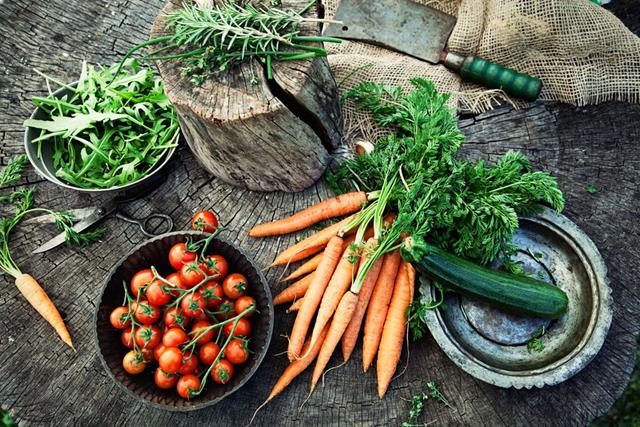Are you interested in starting a vegetable garden but not sure where to begin? If you have a partially shaded area in your yard, there is no need to worry. In this article, we will discuss plans for partial shade vegetable gardens, including the best vegetables for partial shade, garden design tips, soil and fertilization methods, watering and maintenance needs, pest and disease management, seasonal considerations, and even success stories and tips from experienced gardeners.
Partial shade refers to an area that receives filtered sunlight for only part of the day. Understanding this concept is crucial in order to successfully cultivate a vegetable garden in such conditions. The amount of sunlight can impact the growth and yield of vegetables, so it’s important to choose the right plants for this environment.
When planning a partial shade vegetable garden, it’s essential to consider which vegetables will thrive in these conditions. Some plants are better suited for limited sunlight and can still produce abundant harvests. In addition to selecting the right vegetables, designing the layout of the garden is also important for maximizing space and ensuring proper airflow and sunlight exposure.
In addition to discussing the best vegetables for partial shade and how to design a suitable garden layout, we will also delve into soil types and fertilization methods that are most beneficial for partial shade vegetable gardens. Proper care of the soil is essential for ensuring healthy plant growth and bountiful yields. Stay tuned as we explore all aspects of planning a successful partial shade vegetable garden.
Best Vegetables for Partial Shade
Partial shade can present a unique set of challenges for vegetable gardeners, but with careful planning and selection of the right vegetables, it is entirely possible to have a bountiful harvest. Here are some of the best vegetables to consider for partial shade vegetable gardens:
- Leafy Greens: Vegetables such as spinach, lettuce, kale, and Swiss chard are excellent choices for partial shade gardens. They thrive in cooler temperatures and can tolerate less sunlight compared to other vegetables.
- Root Vegetables: Certain root vegetables like beets, carrots, and radishes can also do well in partial shade. While they may take longer to mature compared to those grown in full sun, they are still viable options for a partial shade garden.
- Herbs: Many herbs, including mint, parsley, cilantro, and chives, can thrive in partial shade conditions. These versatile plants can add flavor to your dishes while enhancing the aesthetics of your garden.
When designing your partial shade vegetable garden, it’s important to take into account the specific light requirements of each vegetable. Placing taller plants on the southern side of the garden will ensure that they do not overshadow smaller or more sun-sensitive crops. Additionally, using reflective materials or light-colored surfaces can help maximize available light and create a more hospitable environment for your plants.
In regards to spacing and layout, consider using raised beds or containers that can be moved throughout the day to capture as much sunlight as possible. Grouping together vegetables with similar light requirements can also simplify maintenance and optimize their growth potential. By carefully selecting the right combination of vegetables and implementing strategic design techniques, you can create a thriving partial shade vegetable garden that yields a variety of delicious produce throughout the growing season.
Garden Design Tips for Partial Shade
When planning a vegetable garden in an area with partial shade, it is important to understand the specific needs of the plants that will be grown in this environment. Proper garden design can make a significant impact on the success of a partial shade vegetable garden. Here are some key tips for laying out and designing a vegetable garden in partial shade.
Choose the Right Location
When planning a vegetable garden in partial shade, it is crucial to choose the right location. Look for an area that receives at least 4-6 hours of sunlight per day, as this is generally considered suitable for most vegetables. Additionally, consider the proximity to trees or buildings that may create additional shade during certain times of the day.
Utilize Raised Beds or Containers
In areas with limited sunlight, raised beds or containers can be beneficial for growing vegetables. These options allow for better control over soil quality and drainage, as well as easier maneuverability to optimize available sunlight throughout the day.
Companion Planting
Consider companion planting when designing a partial shade vegetable garden. Some plants thrive together and can provide benefits such as pest control and improved growth. For example, planting leafy greens like lettuce or spinach alongside taller plants such as tomatoes can help maximize space and light utilization.
Vertical Gardening
Incorporating vertical gardening techniques can be advantageous in a partially shaded environment. Utilizing trellises, stakes, or cages for climbing vegetables like peas, cucumbers, or pole beans can help them reach for more sunlight and optimize their growth potential.
By incorporating these garden design tips into plans for partial shade vegetable gardens, individuals can increase their chances of successfully growing healthy and productive crops even in less-than-ideal lighting conditions.
Soil and Fertilization
When it comes to cultivating a vegetable garden in partial shade, soil type and fertilization play a crucial role in the success of your plants. Understanding the specific needs of vegetables in partial shade conditions will help you create an optimal environment for growth.
Soil Types for Partial Shade Vegetable Gardens
Choosing the right soil type is essential for any garden, but it becomes especially important in partial shade environments. Vegetables in partial shade benefit from well-draining soil that is rich in organic matter. The ideal soil type for partial shade vegetable gardens is loamy soil, which provides a good balance of drainage and moisture retention. Additionally, incorporating compost into the soil can improve its texture and nutrient content, creating a more favorable environment for plant growth.
Fertilization Methods
Partial shade vegetable gardens require regular fertilization to ensure that plants have access to essential nutrients. Organic fertilizers are often preferred for their slow-release properties and ability to improve soil structure over time.
Compost tea, fish emulsion, and seaweed extract are popular organic options that provide a nutrient boost without the risk of burning plant roots. It’s important to monitor the nutrient levels in the soil and adjust your fertilization schedule accordingly to meet the specific needs of your vegetables in partial shade.
Tips for Fertilizing Partial Shade Vegetable Gardens
When applying fertilizer to your partial shade vegetable garden, it’s important to follow recommended guidelines to avoid over-fertilization, which can harm sensitive plants. Applying fertilizer during periods of active growth and avoiding excessive nitrogen can help maintain healthy plant development.
Additionally, conducting a soil test every year can provide valuable insight into nutrient deficiencies and guide your fertilization efforts. By being mindful of both soil type and fertilization methods, you can create an optimal growing environment for your vegetables in partial shade.
Watering and Maintenance
When it comes to watering and maintenance, vegetables in partial shade have specific needs that must be understood and addressed in order to ensure a successful harvest. While partial shade can provide some relief from the intense heat of full sun, it also means less direct sunlight for plant growth and moisture evaporation. This can result in different watering requirements compared to plants grown in full sun.
One important aspect of watering vegetables in partial shade is to pay attention to soil moisture levels. The reduced amount of sunlight can lead to slower evaporation, which means the soil may retain moisture for longer periods. It’s crucial to check the soil regularly and only water when necessary, as overwatering can lead to root rot and other issues. Using mulch around the base of plants can help retain moisture and reduce the frequency of watering.
In terms of maintenance, it’s important to keep an eye on the overall health of the plants, especially since they may be more susceptible to certain pests and diseases in partial shade. Regular inspection for signs of stress or infestation is key, as catching issues early can prevent them from becoming major problems.
Additionally, providing proper support for taller vegetable varieties such as tomatoes or beans is essential, as they may stretch towards available light sources in order to thrive.
Understanding these specific watering and maintenance needs is vital for anyone with plans for partial shade vegetable gardens. By taking these factors into consideration and implementing appropriate practices, gardeners can successfully cultivate a thriving vegetable garden even in areas with limited sunlight.
| Aspect | Recommendation |
|---|---|
| Soil Moisture Levels | Check soil regularly and water only when necessary; use mulch to retain moisture |
| Maintenance | Regular inspection for signs of stress or infestation; provide support for taller vegetable varieties |
Pest and Disease Management
When planning a vegetable garden in a partially shaded area, it’s important to understand the potential pests and diseases that may affect your plants. Common pests such as aphids, slugs, and snails thrive in moist, shady environments, making them more likely to target your vegetables. Additionally, fungal diseases like powdery mildew and downy mildew can also be more prevalent in partial shade. It’s essential to be proactive in preventing these issues by implementing proper management strategies.
One effective method for managing pests in partial shade vegetable gardens is to encourage natural predators. For example, ladybugs are beneficial insects that feed on aphids, while birds can help control snail populations. By creating a welcoming environment for these natural predators through the use of bird feeders or by planting flowers that attract beneficial insects, you can help keep pest populations in check.
In terms of disease management, practicing good sanitation is crucial. This includes removing any diseased plant material promptly and ensuring proper spacing between plants to promote air circulation. Additionally, choosing disease-resistant varieties when possible can help mitigate the risk of fungal infections. By staying vigilant and addressing any pest or disease issues early on, you can help ensure the success of your partial shade vegetable garden.
| Common Pests | Management Strategies |
|---|---|
| Aphids | Encourage natural predators such as ladybugs; use insecticidal soap if infestation is severe |
| Slugs and Snails | Attract birds to the garden; use barriers like copper tape around plant stems |
| Powdery Mildew and Downy Mildew | Practice good sanitation; choose disease-resistant plant varieties |
By being mindful of potential pests and diseases and implementing proactive management strategies, you can cultivate a flourishing vegetable garden even in partially shaded areas.
Seasonal Considerations
When planning a vegetable garden in partial shade, it’s important to consider how the changing seasons will impact the growth and development of your plants. Each season brings its own set of challenges and considerations that can affect the success of your garden. Here are some tips on how to adapt to these changes throughout the year:
1. Spring: As the weather begins to warm up, it’s important to pay attention to the amount of sunlight your garden receives. Some vegetables may require more sunlight as they begin to grow, so consider planting them in areas where they will receive the most light during this time. Additionally, be mindful of any early pests or diseases that may start to appear and take proactive measures to prevent them from damaging your plants.
2. Summer: With the hot summer months comes the risk of dehydration for your plants. Make sure to water your garden regularly, especially during dry spells, and consider adding a layer of mulch around your plants to help retain moisture in the soil. Keep an eye out for signs of heat stress in your vegetables and provide shade if necessary.
3. Fall: As temperatures start to cool down, you may need to adjust your watering schedule and protect your plants from cooler temperatures at night. Consider covering your vegetables with row covers or plastic tunnels to extend their growing season and protect them from frost.
By being aware of how each season can impact your partial shade vegetable garden, you can make adjustments as needed to ensure a successful harvest throughout the year. It’s also helpful to seek advice from experienced gardeners who have dealt with similar seasonal challenges in their own gardens. Learning from their success stories and tips can provide valuable insights into managing a vegetable garden in partial shade across different seasons.
Success Stories and Tips From Experienced Gardeners
In conclusion, cultivating a vegetable garden in partial shade can be a rewarding and successful endeavor with the right knowledge and planning. Understanding the concept of partial shade and its impact on vegetable gardens is crucial in selecting the best vegetables for this environment. By choosing vegetables that thrive in partial shade conditions, such as leafy greens, root vegetables, and certain herbs, gardeners can ensure a bountiful harvest.
When designing a garden in partial shade, it’s important to take into account the layout and spacing of the plants to maximize sunlight exposure. Additionally, using the right soil types and fertilization methods can provide the necessary nutrients for plants to flourish in this environment. Proper watering and maintenance are also essential in ensuring the health of vegetables in partial shade.
Moreover, addressing common pests and diseases that affect vegetables in partial shade and knowing how to prevent or manage them is crucial for a successful harvest. As seasons change, adapting to these changes is key for maintaining a thriving vegetable garden in partial shade.
Finally, learning from experienced gardeners who have successfully cultivated vegetable gardens in partial shade environments can provide valuable insights and tips for those embarking on their own gardening journey. With the right plans and knowledge, a thriving vegetable garden in partial shade is indeed attainable.
Frequently Asked Questions
What Vegetables Can Grow in Partial Shade?
Vegetables that can grow in partial shade include leafy greens like lettuce, spinach, and kale. Root vegetables such as carrots and beets also do well in partial shade. Additionally, certain herbs like cilantro and parsley can thrive in these conditions.
What Vegetables Require the Least Amount of Sun?
Some vegetables that require the least amount of sun include radishes, arugula, and chard. These plants can tolerate as little as 3-4 hours of direct sunlight per day, making them suitable for partially shaded areas or overcast climates.
Can Cucumbers Grow in Partial Shade?
Cucumbers generally prefer full sun to thrive, but they can still grow in partial shade. However, they may produce fewer fruits and have slower growth compared to those grown in full sunlight. It’s important to provide them with enough sunlight to ensure a healthy harvest.

If you’re looking to get into vegetable gardening, or are just looking for some tips on how to make your current garden better, then you’ve come to the right place! My name is Ethel and I have been gardening for years. In this blog, I’m going to share with you some of my best tips on how to create a successful vegetable garden.





